Research Projects
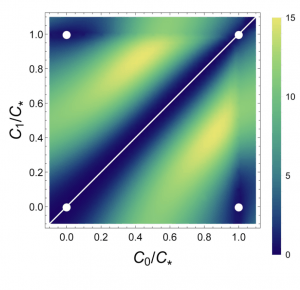
Physics of entanglement
Silas Beane (UW Physics), David Kaplan (UW Physics, INT), Kenneth Roche (PNNL), Alessandro Roggero (INT), Martin Savage (UW Physics, INT) / Learn More
Entanglement is perhaps the defining feature of quantum mechanics. Our group is working to better understand its role in the structure and dynamics of strongly coupled quantum many-body systems.
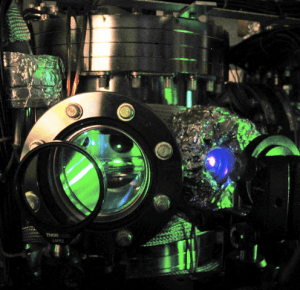
Ultracold Atoms and Molecules
Subhadeep Gupta / Learn More
Ultracold neutral atoms can be used for studies in few-body physics and chemistry as well as applied towards quantum information processing. We are working with ultracold atoms to study quantum superfluids, coherently prepare ultracold molecules and perform precision interfometry and fundamental tests.
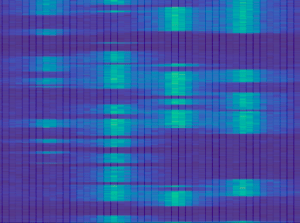 Quantum Jumps
Quantum Jumps
Boris Blinov / Learn More
We plan to observe, study and possibly control quantum jumps with a single trapped Ba ion, where the quantum jumps can be detected on the fastest possible time scales. We are building a novel ion trap combined with a high-eccentricity ellipsoidal mirror (or a very deep parabolic mirror) covering > 95% of the solid angle around the ion placed at the mirror focus.
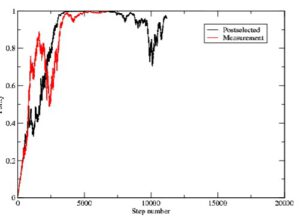 Dynamics of Quantum Entanglement
Dynamics of Quantum Entanglement
Lukasz Fidkowski, Joseph Merritt / Learn More
We study many body quantum systems undergoing a hybrid evolution involving both local unitary gates, which tend to create entanglement, and measurements, which tend to destroy it. The competition between these two effects can give rise to novel dynamical phase transitions characterized not by any local order parameter but rather by the behavior of the entanglement entropy. We study these phase transitions numerically and analytically. More generally, and also with external collaborators (Matthew Hastings and Jeongwan Haah, Microsoft) we study the implications of this for the storage of quantum information and quantum error correction.
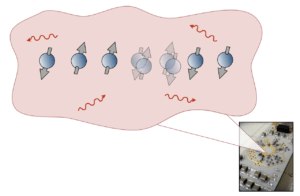 Dynamics of Open Quantum Many-Body Systems
Dynamics of Open Quantum Many-Body Systems
Mark Rudner / Learn More
The evolution of an ideal, isolated quantum system is unitary, as described by the Schrödinger equation. In the real world, however, systems of experimental interest exist in the presence of and interact with an environment of additional degrees of freedom (e.g., phonons and electromagnetic fields). The interaction of the system with its environment imparts a nonunitary, or incoherent, character to the system’s evolution. We are developing new approaches and methods for studying the dynamics of open quantum many-body systems, and exploring the consequences for emerging quantum hardware.
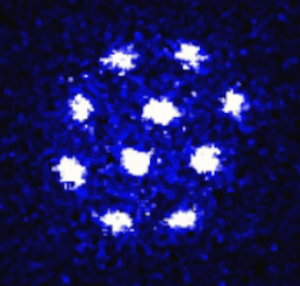
2D Trapped Ion crystals
Boris Blinov / Learn More
Trapped ions are one of the world’s leading technology platforms for quantum computing but have primarily been limited to linear, or one-dimensional traps. The 2D Trapped Ion Crystal Project in the Trapped Ion Quantum Computing Lab at UW is developing a novel trap geometry specifically for two-dimensional crystals of ions, allowing us to increase the number of qubits available for quantum logic operations.
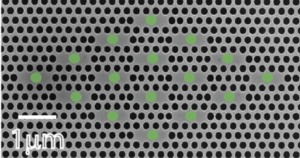
Photonic-Enabled Noisy Intermediate-Scale Quantum System (PHOENIQS)
Arka Majumdar (students Yueyang Chen, David Rosser, Abhi Saxena) / Learn More
The project aims to realize an nanophotonic array of coupled nonlinear cavities, where the quantum materials enable nonlinearity at the few-photon level. The resulting quantum photonic platform is impossible to simulate in any classical computer and will allow synthesis of novel quantum states of light.
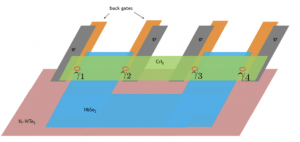
Majorana modes in a 2D platform based on monolayer topological insulator WTe2
David Cobden and Lukasz Fidkowski / Learn More
In principle, decoherence of qubits can be avoided using “topological protection”, with the most promising scheme for such topological protection being based on so-called Majorana zero modes. In this project, the PIs are seeking to engineer these exotic Majorana modes by proximity-inducing superconductivity and magnetism in the edge of the two-dimensional topological insulator, monolayer WTe2. Early on, they have demonstrated the coupling of a two-dimensional magnetic material, CrI3, to the topological insulator. More recently, they also found strong new evidence that the edge electrons have the appropriate “helical” properties, and have determined the direction of lthe electron spin in the edges, which allows manipulation using an external magnetic field.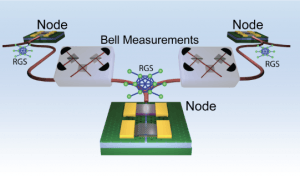
Deterministic photonic graph-state repeater networks from solid state emitters integrated in chiral photonic circuits
Mo Li (UW ECE/Physics), Xiaodong Xu (UW Physics/MSE) with Sophia Economou (PI, Virginia Tech), Gurudev Dutt (University of Pittsburgh), Edwin Barnes (Virignia Tech)
This project addresses the pressing need for secure communication at long distance scales while employing minimal resources using novel theoretical schemes. The approach is based on the development of new, high-quality light sources capable of producing many quantum-correlated (entangled) photons at a high rate; these light sources will be integrated into a device that is capable of directing the photons on a microchip and reliably guiding them to optical fibers for long-distance transmission.
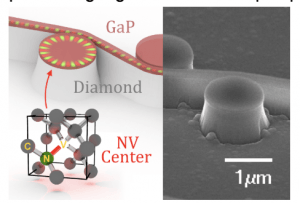
Photonic quantum networks based on quantum point defects
Kai-Mei Fu / Learn More
A critical resource for quantum computers is quantum entanglement. Our group works on realizing efficient quantum entanglement with quantum defects by (1) understanding and contolling the spin and optical properties of defects (e.g. donors in ZnO) and (2) designing, implementing, and testing integrated quantum circuits in diamond with the aim to significantly increase quantum entanglement generation rates on a chip. Individual and collaborative projects in this area are funded by NSF and DOE’s National Quantum Initiative Center C2QA.
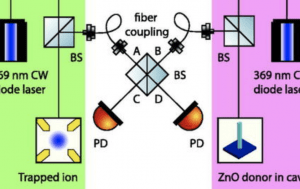
Entanglement in a hybrid solid state/atomic quantum system
Kai-Mei Fu and Boris Blinov/ Learn More
Establishing quantum interconnects between disparate quantum systems may help build new quantum hardware that benefits from the unique features of the component systems for improved performance. This project aims to entangle a solid state spin in ZnO with a trapped Yb ion via a photonic interconnect.
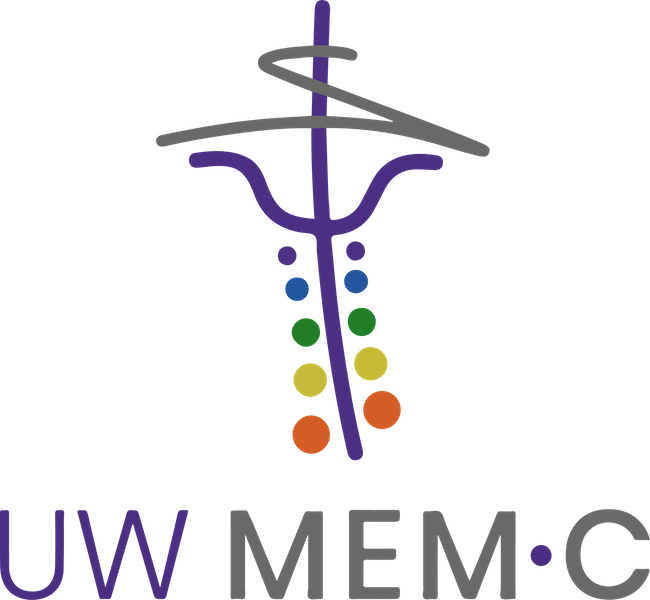
UW Molecular Engineering and Materials Center (MEM•C)
UW MEM-C, an NSF MRSEC center, supports a wide range of research projects aimed at accelerating our understanding of quantum materials and materials for quantum information. The first interdisciplinary research group (IRG1) focuses on defects, which can serve as spin qubits and single photon sources in colloidal inorganic nanocrystals. IRG 2 is focused on discovering new forms of quantum matter in atomically layered materials. Learn More
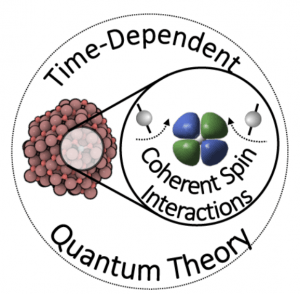
Coherence control of spin dynamics
Xiaosong Li, Daniel Gamelin / Learn More
Understanding spin and magnetization dynamics is crucial to many advanced scientific research and technological developments in quantum computing and quantum information systems. The Li group is developing time-dependent many-electron theories and computational methods that can be applied to simulate physically relevant non-equilibrium spin dynamics and internal spin couplings. The Gamelin group is using optical and microwave spectroscopies to probe coherent spin dynamics in nanocrystals and thin films.

Ab initio quantum materials
Xiaodong Xu, Kai-Mei Fu with Dirk Englund (PI, MIT), Jing Kong (MIT), Marko Loncar (Harvard), Jianwei Miao (UCLA), Pineha Narang (Harvard) / Learn More
This project seeks to make a major advances in solid-state quantum technologies by developing tools to predict – from first-principles quantum theory – the properties of quantum materials, and then to fabricate, image and measure them at the atomic scale.

Ultracold Atoms and Molecules
Subhadeep Gupta / Learn More
Ultracold neutral atoms can be used for studies in few-body physics and chemistry as well as applied towards quantum information processing. We are working with ultracold atoms to study quantum superfluids, coherently prepare ultracold molecules and perform precision interfometry and fundamental tests.
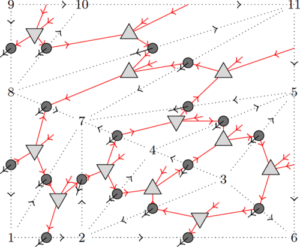 Quantum information theoretic approaches to classifying topological phases
Quantum information theoretic approaches to classifying topological phases
Lukasz Fidkowski, Tyler Ellison, Sujeet Shukla / Learn More
It has recently been realized that questions about the classification of quantum phases of matter can be interpreted in a quantum information theoretic framework. Together with external collaborators (Matthew Hastings and Jeongwan Haah, Microsoft), we use this new intuition to find novel many-body invariants that characterize such phases, and try to connect these invariants to ones obtained from a continuum quantum field theory approach.
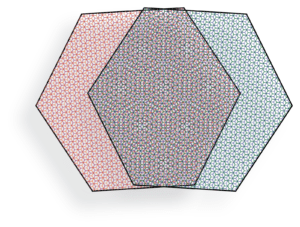 Strong correlations and topology in moiré quantum matter
Strong correlations and topology in moiré quantum matter
Matthew Yankowitz, Xiaodong Xu / Learn More
Synthetic quantum materials with highly tunable properties can be constructed by stacking two-dimensional crystals atop one another with a small twist angle. The rotated crystal lattices interfere to create a “moiré pattern” that drives exotic new materials properties. This project seeks to create, study, and control strongly correlated and topological states of matter in moiré materials.
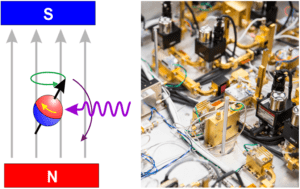 Electron Spin Quantum Dynamics
Electron Spin Quantum Dynamics
Stefan Stoll / Learn More
Electron spins in molecular systems can serve as molecular spin qubits in quantum sensing applications. The Stoll group utilizes pulse electron paramagnetic resonance (EPR) spectroscopy methods to fully coherently control the quantum dynamics of individual and coupled electron spins.

UW Molecular Engineering and Materials Center (MEM•C)
UW MEM-C, an NSF MRSEC center, supports a wide range of research projects aimed at accelerating our understanding of quantum materials and materials for quantum information. The first interdisciplinary research group (IRG1) focuses on defects, which can serve as spin qubits and single photon sources in colloidal inorganic nanocrystals. IRG 2 is focused on discovering new forms of quantum matter in atomically layered materials. Learn More
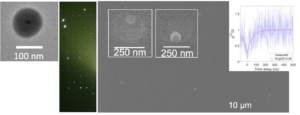
Synthesis of tailored quantum emitters
David Ginger, Brandi Cossairt, Daniel Gamelin
Solution-processable quantum dots and doped materials offer compelling advantages for scaling, tunability, and heterointegration in quantum information systems. Our team is exploring new materials and synthetic methods that can open the door to precisely tailored, chemically synthesized quantum materials with both coherent emission and unique properties (such as a strong optical Stark effect) for quantum-enabled technologies.
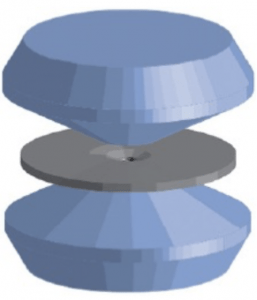
Molecular synthesis of nanodiamond quantum sensors
Peter Pauzauskie, Xiaosong Li, Rhonda Stroud (NRL) / Learn More
The synthesis of nanoscale materials for quantum sensing and communication applications remains a persistent challenge. In this project atomically-precise, molecular precursors are being employed for the synthesis of well-defined quantum point defects in nanodiamond materials. Recently, tetraethylorthoxysilane (TEOS) molecules have been used to create negatively-charged silicon-divacancy (SiV) point defect in nanodiamond materials.
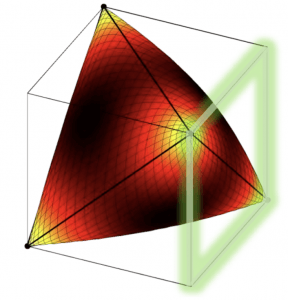 Spectrahedral lifts of polytopes and quantum communication
Spectrahedral lifts of polytopes and quantum communication
James R. Lee / Learn more
Semidefinite programming (SDP) is a surprisingly powerful optimization tool, and it is natural to ask whether a given polytope has a succinct SDP formulation. It turns out that every such formulation contains within it a quantum communication protocol, where the number of qubits communicated is characterized by the dimension of the formulation

Scientific Computing on Quantum Devices
Silas Beane (UW Physics), David Kaplan (UW Physics, INT), Kenneth Roche (PNNL), Alessandro Roggero (INT), Martin Savage (UW Physics, INT) / Learn More
Quantum computing has the potential to solve critical problems that cannot be addressed with classical computation in understanding the structure of matter in both relativistic particle physics and nonrelativistic nuclear and condensed matter physics. Our group is involved in formulating mappings of quantum systems, developing algorithms for their initialization and evolution, and performing computations, on near-term and ideal quantum devices. We also study how quantum field theory can aid in the development and operation of quantum devices.
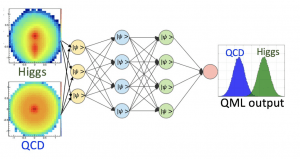
Quantum Machine Learning on Identifying Higgs Bosons
Shih-Chieh Hsu
The discovery of Higgs boson opens new windows to search for Beyond the Standard Model physics thanks to predictions of new particles decaying to Higgs bosons. Identification of extremely rare Higgs bosons from enormously abundant background at the Big Bang machine, LHC, is a challenging and sophisticated task. It is possible that quantum computing can provide a different, and better way to achieve global optimization. UW ATLAS team is employing Machine Learning algorithms to address Higgs identification problems in order to maximize the discovery potential in the even more complicated environment at the High-Luminosity LHC to be launched in 2026.
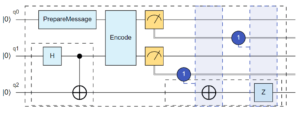 Quantum State Visualization
Quantum State Visualization
Andres Paz
A tool to visualize the transition of a quantum system’s states as a program is simulated. The goal of the tool is to find innovative ways to represent quantum states to help software developers better understand the action of each operation on quantum algorithms to identify bugs and improve the development experience.
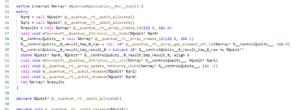 QIR Resources Estimation
QIR Resources Estimation
Andres Paz
Resources estimation is a key tool in the current development of quantum programs as it provides an approximation of the number of qubits and operations an algorithm uses thus helping to understand the type of hardware we will need to actually run the program. This project aims to build a tool capable of calculating resources using the platform agnostic Quantum Intermediate Representation (QIR), an LLVM based language used to represent quantum programs.
 Quantum Computing for Quantum Chemistry
Quantum Computing for Quantum Chemistry
Xiaosong Li
The “holy grail” of quantum chemistry is the accurate simulation of realistic molecular systems at a computational cost that does not scale exponentially with the system size. Since the application of quantum chemistry to quantum computers is still in its infancy, exploring completely new algorithmic methods on noisy intermediate scale quantum devices and beyond is vital for scientific progress in molecular simulations. By using quantum hardware to our advantage, we develop and design algorithms suitable for emulating quantum chemistry on quantum computers, including new techniques to prepare initial quantum states and emulate light-matter interactions.
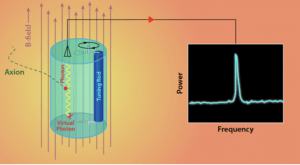
Axion Dark Matter Experiment (ADMX)
Gray Rybka, Leslie Rosenberg / Learn More
ADMX searches for extremely tiny signals from interactions with dark matter using superconducting cryogenic amplifiers (SQUIDs and JPAs) operating at the standard quantum limit. The experiment (operating at UW) is seeking to improve sensitivity beyond the standard quantum limit with single microwave photon manipulation, squeezing, and counting.
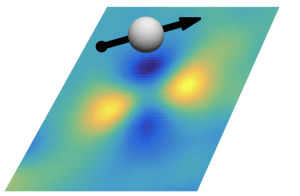
A nanoscale, unbleachable orientation and position quantum sensor for biophysical imaging
Kai-Mei Fu and Paul Wiggins / Learn More
The project is developing a novel sensor for biophysical applications that can simultaneously measure the three-dimensional position and orientation of a nanoparticle magnetic probe by imaging the photoluminescence from quantum defects in diamond.
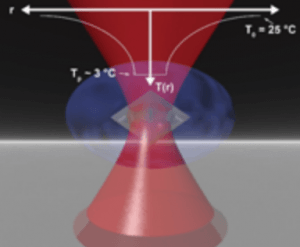
Mesoscopic quantum metrology with levitated optomechanical systems
Peter Pauzauskie (UW MSE), Nick Vamivakas (PI, U. Rochester), Andrew Geraci (Northwestern), Jack Harris (Yale), Mishkatul Bhattacharya (RIT), Bruce Kane (U. Maryland) / Learn More
Quantum sensing of weak forces and small displacements frequently requires cooling detectors near absolute zero. In this project nanoscale ceramic materials are being designed, synthesized, and tested for use in reaching translational quantum harmonic ground states through a combination of single-beam laser trapping and solid-state laser-refrigeration.
For projects that have ended, view the Archived Projects Page.
